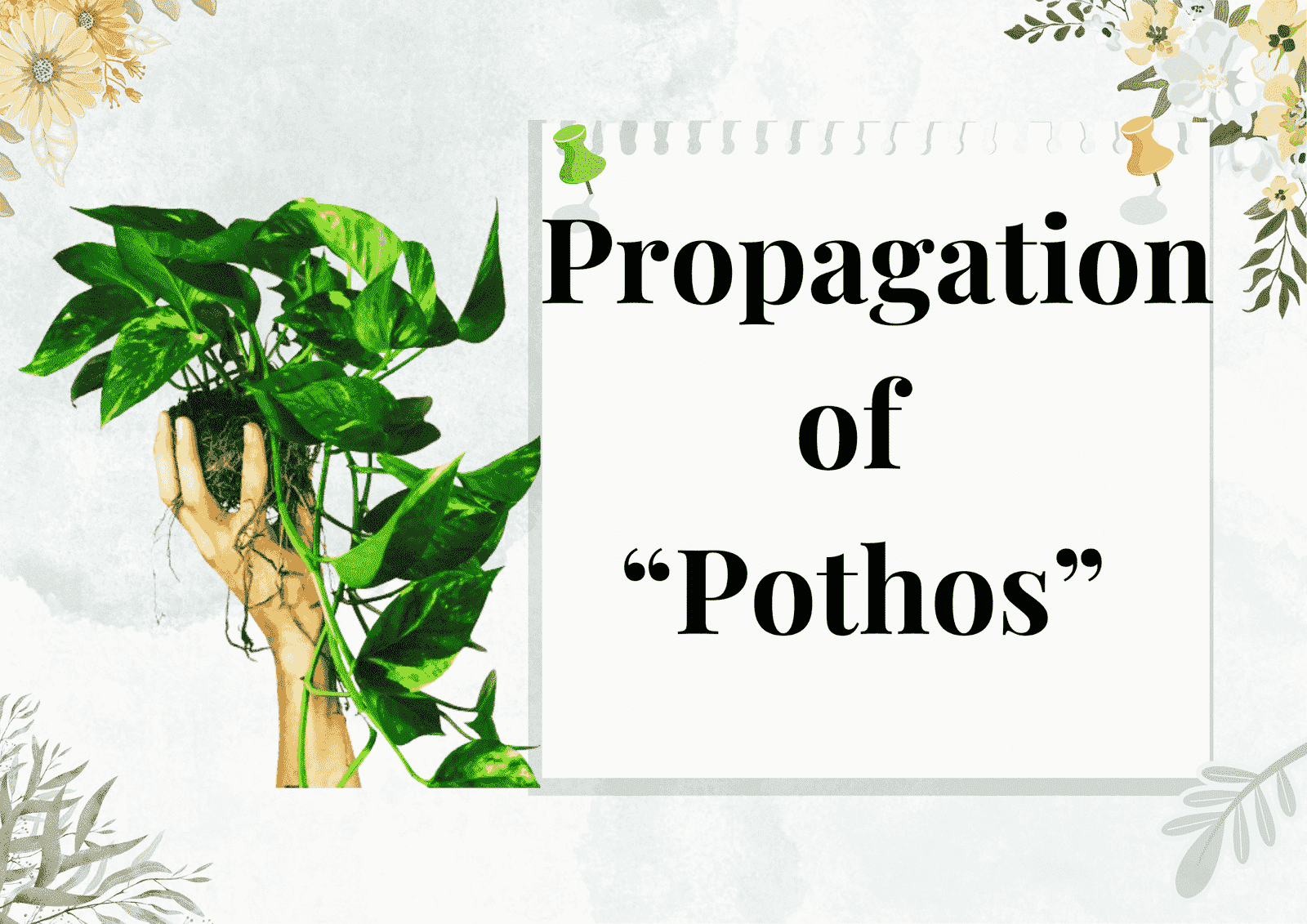If you’ve ever admired the lush, trailing vines of a Pothos plant, you’ve probably thought about how great it would be to have more of them around your home. The good news is, propagating Pothos is one of the easiest and most rewarding ways to multiply your collection without spending a dime. Whether you’re a seasoned plant parent or just getting started, Pothos propagation is something anyone can do.
Pothos, also known as Devil’s Ivy, is a hardy and forgiving plant that thrives in a variety of conditions. This makes it perfect for propagation, which simply means creating new plants from an existing one. Not only does propagating Pothos give you more plants to enjoy or share, but it’s also a great way to keep your main plant healthy and bushy by trimming and encouraging new growth.
There are several ways to propagate Pothos, with the most common being in water or soil. Each method has its own charm, but both are simple and effective. So, grab your scissors, a glass of water, and let’s dive into the wonderful world of Pothos propagation!
Table of Contents
Tools and Materials Needed
Before we get started with propagating your Pothos, let’s gather everything you’ll need. Don’t worry—nothing on this list is hard to find, and you might already have most of it at home.
Here’s what you’ll need:
- A healthy Pothos plant
- Clean, sharp scissors or pruning shears
- Small containers or jars
- Potting mix
- Water
Now that you’ve got everything on hand, you’re ready to start propagating your Pothos. Preparing ahead of time makes the whole process smoother and more enjoyable. Plus, it gives you the peace of mind that you’re setting your new Pothos cuttings up for success from the very beginning. Ready to dive into the fun part? Let’s move on to the step-by-step process of propagating your Pothos in water!
Step-by-Step Guide to Propagating Pothos in Water
Now comes the fun part—actually propagating your Pothos! We’re going to start with the water method, which is not only super easy but also lets you watch the magic of root growth happen right before your eyes. Ready? Let’s get started!
Step 1: Choose the Perfect Vine
First things first, you’ll need to pick a healthy vine from your Pothos plant. Look for one that’s long, with several leaves, and ideally a few nodes (those little bumps along the vine where leaves and roots grow). Nodes are where the magic happens, so make sure your cutting has at least two or three.
Step 2: Make a Clean Cut
Grab your clean, sharp scissors or pruning shears, and snip the vine just below a node. This is where the new roots will grow. It’s important to cut just below the node to give your cutting the best chance to root. Don’t worry about harming your plant—it’s resilient and will bounce back with new growth in no time.
Step 3: Prep the Cutting
Now that you’ve got your vine, remove the leaves closest to the cut end. You want to avoid having any leaves submerged in water, as they can rot and spoil the water. Leaving a few leaves at the top of your cutting is perfect—that’s where it’ll get energy from sunlight.
Step 4: Place the Cutting in Water
Fill your container with fresh water and gently place the cutting in so that the nodes are submerged. You don’t need a lot of water—just enough to cover the nodes. A clear jar works best because it lets you see the roots as they grow, which is always exciting!
Step 5: Find a Bright Spot
Place your jar in a bright spot with indirect sunlight. Avoid direct sunlight, as it can be too harsh and may cause the water to heat up too much. Indirect light is perfect for encouraging root growth while keeping the cutting healthy.
Step 6: Wait and Watch
Now, all that’s left to do is wait! Check on your cutting every few days, and make sure to change the water if it gets cloudy. After about two to four weeks, you should start to see little roots emerging from the nodes. Once the roots are a couple of inches long, your cutting is ready to be potted in soil if you choose—or you can leave it in water if you like the look!
Pro Tip: Be Patient
Rooting can take a little time, so be patient. If you don’t see roots right away, don’t worry. As long as your cutting looks healthy, it’s on the right track.
And that’s it! You’ve just propagated your Pothos in water. It’s a simple, rewarding process that’s perfect for beginners and seasoned plant enthusiasts alike. Next up, we’ll cover how to propagate Pothos in soil, which is just as easy and rewarding!
Step-by-Step Guide to Propagating Pothos in Soil
If you’re more of a “plant it and watch it grow” type of person, propagating Pothos in soil is right up your alley. This method is great if you want to skip the water stage and let your Pothos start rooting directly in its new home. Let’s walk through the steps to get your Pothos cutting happily settled in the soil.
Step 1: Choose and Cut Your Vine
Just like with the water method, start by selecting a healthy vine with a few nodes. Use your clean, sharp scissors or pruning shears to make a cut just below a node. Remember, the node is key—this is where the roots will develop, so make sure your cutting has at least two nodes.
Step 2: Prep the Cutting
Once you’ve got your vine, remove the leaves from the lower part of the cutting, leaving a few leaves at the top. This ensures that the node is clear and ready to be planted. If any leaves are too close to the bottom, they might end up buried in the soil, which could lead to rot—so it’s best to trim them away.
Step 3: Prepare the Soil
Next, grab a small pot with drainage holes and fill it with a well-draining potting mix. Pothos aren’t too picky, but they do prefer soil that doesn’t stay soggy. You can use a standard houseplant mix, or if you want to get fancy, mix in a bit of perlite or sand to improve drainage.
Step 4: Plant the Cutting
Make a small hole in the soil with your finger or a pencil, then gently place your cutting into the hole, ensuring that at least one node is buried. Press the soil around the cutting to keep it stable, but don’t pack it down too hard—you want to leave some room for the roots to grow.
Step 5: Water and Wait
After planting, give the soil a good watering until it’s evenly moist (but not waterlogged). Place your pot in a bright spot with indirect sunlight, and keep an eye on the moisture level. You want to keep the soil lightly moist, but not soggy.
Step 6: Monitor Growth
Unlike water propagation, you won’t be able to see the roots growing, but don’t worry—they’re working hard beneath the surface. In a few weeks, you might notice new growth on top, which is a sign that the roots are developing nicely. Give your cutting time, and soon enough, you’ll have a thriving new Pothos plant.
Pro Tip: Create a Mini Greenhouse
If you want to boost your cutting’s chances of success, try covering the pot with a clear plastic bag or plastic wrap to create a mini greenhouse. This helps trap humidity, which encourages faster root growth. Just make sure to remove the cover once you see new growth, so your plant doesn’t overheat.
And there you have it—Pothos propagation in soil is a breeze! It’s a bit more hands-off than the water method, but it’s just as effective. Whether you choose water or soil, you’re well on your way to filling your home with even more beautiful Pothos plants.
Alternative Methods of Propagating Pothos
So, you’ve mastered the water and soil methods—awesome! But did you know there are a few other ways to propagate your Pothos? If you’re feeling adventurous or just want to try something different, here are some alternative methods to explore. Each of these methods has its own charm, and they’re all worth trying out if you’re looking to expand your propagation skills.
Propagation via Division
If your Pothos has grown into a full, bushy plant with multiple vines sprouting from the base, you can divide it to create new plants. This method is perfect for when your Pothos is getting a bit too crowded in its pot.
Here’s how to do it:
- Carefully remove the Pothos from its pot and gently separate the root ball into smaller sections. Each section should have its own roots and a few healthy vines.
- Replant each section into its own pot with fresh soil, making sure the roots are well-covered.
- Water thoroughly and place the new pots in bright, indirect light.
It’s a simple process, and before you know it, you’ll have multiple Pothos plants ready to thrive.
Propagation Using Aerial Roots
If you’ve noticed those little brown bumps along your Pothos vines, you’re looking at aerial roots. These roots are already trying to grow, which makes them a great target for propagation.
Here’s how to make use of them:
- Choose a vine with a healthy aerial root (or several) and cut just below the root.
- Place the cutting in water or soil, making sure the aerial root is submerged or buried.
- Care for it as you would any other cutting, and watch as it quickly establishes itself as a new plant.
The best part? Aerial roots speed up the rooting process, so you’ll have a thriving new Pothos in no time.
Propagation Using Stem Cuttings in Moss
This method is a bit more advanced but offers a great way to propagate if you’re looking for something different. Sphagnum moss is a fantastic medium that retains moisture while allowing plenty of air around the roots.
Here’s how to do it:
- Soak some sphagnum moss in water, then squeeze out the excess so it’s damp but not dripping.
- Take your Pothos cutting and press the node into the moss, then wrap the moss around the cutting.
- Place the moss-wrapped cutting in a clear plastic bag or container to create a humid environment.
- Keep an eye on the moisture level and wait for roots to grow. Once you see strong roots, you can transfer the cutting to soil.
This method takes a bit more care, but it’s a fun experiment and can lead to a healthy, well-rooted plant.
Common Issues and Troubleshooting
Even though propagating Pothos is pretty straightforward, sometimes things don’t go exactly as planned. But don’t worry—most issues can be easily fixed with a little know-how. Here are some common problems you might encounter during propagation, along with tips on how to troubleshoot them.
Yellowing Leaves
One day, you check on your Pothos cutting, and oh no—some of the leaves are turning yellow. Don’t panic! Yellowing leaves are usually a sign of stress, but they’re not always a deal-breaker.
Possible Causes:
- Overwatering: If your cutting is in soil, make sure the potting mix isn’t too wet. Pothos like their soil to be moist, but not soggy. In water, this isn’t usually an issue, but you might want to change the water if it’s been sitting too long.
- Lack of light: Your cutting needs bright, indirect light to stay healthy. If it’s not getting enough light, try moving it to a brighter spot.
Solution: Remove the yellow leaves to help the cutting conserve energy. Then, adjust the watering and light conditions to see if the remaining leaves stay green. In most cases, a little tweak is all it takes to get your cutting back on track.
Rotting Cuttings
Root rot is the bane of plant propagation. If you notice the base of your cutting turning black and mushy, it’s likely suffering from rot.
Possible Causes:
- Too much moisture: Overwatering or poor drainage is the most common cause. If the soil stays too wet, it creates the perfect environment for rot to set in.
- Dirty tools: Using scissors or shears that weren’t cleaned before cutting can introduce bacteria that lead to rot.
Solution: If you catch it early, you might be able to save the cutting by snipping off the rotted part and starting over. For soil cuttings, make sure you’re using a well-draining mix and avoid overwatering. For water cuttings, change the water regularly and ensure the container is clean.
Slow Root Growth
You’re checking your water propagation every day, but those roots just aren’t showing up as quickly as you’d hoped. Frustrating, right? Here’s what might be going on.
Possible Causes:
- Temperature: Pothos cuttings root best in warm conditions. If your home is a bit chilly, it could slow down the process.
- Not enough light: Just like mature plants, Pothos cuttings need plenty of indirect light to encourage root growth. Too little light can stall the process.
Solution: Try moving your cutting to a warmer, brighter spot. A bit of patience goes a long way too—rooting can take time, especially if conditions aren’t ideal. But once the roots start, they usually take off quickly!
Frequently Asked Questions(FAQs)
Even after learning the basics, you might still have a few questions floating around about propagating Pothos. That’s totally normal! Let’s dive into some of the most common questions people have about this process and clear up any doubts you might have.
1. How Long Does It Take for Pothos to Root?
One of the most common questions is, “How long until I see those roots?” Patience is key here! Typically, Pothos cuttings start to develop roots within 2 to 4 weeks, but the exact timing can vary depending on factors like light, temperature, and the overall health of the cutting. If you’re rooting in water, you can keep an eye on the progress.
2. Can I Keep My Pothos in Water Long-Term?
Absolutely! Pothos is one of those plants that can live happily in water for quite a long time. In fact, some people prefer the look of Pothos trailing from a vase or jar. Just be sure to change the water regularly—about once a week—to keep it fresh and oxygenated. If you notice the water getting murky or the roots turning slimy, it’s time for a refresh.
3. What’s the Best Time of Year to Propagate Pothos?
Pothos can be propagated any time of year, but spring and summer are ideal. This is when the plant is in its active growing season, so it’s more likely to root quickly and start producing new leaves. That said, if you’re propagating in the colder months, just give it a little extra warmth and light to help things along.
4. Can I Propagate Pothos Without Nodes?
Unfortunately, no. Nodes are essential for Pothos propagation because they’re the spots where roots form. If your cutting doesn’t have any nodes, it won’t be able to grow roots, no matter how much love you give it. Always make sure your cutting has at least one or two nodes to increase your chances of success.
5. What If My Cutting Isn’t Rooting?
If your cutting seems to be taking forever to root, don’t lose hope! Check a few things: Is it getting enough light? Is the water clean, or is the soil draining well? Sometimes, just moving the cutting to a brighter spot or refreshing the water can make all the difference. And if the cutting looks healthy overall, just give it time. Some Pothos cuttings are slow starters, but they usually get there eventually.
6. Can I Propagate a Pothos Vine That’s Lost Its Leaves?
Yes, you can! As long as the vine still has nodes, you can propagate it. Just cut the vine into sections, making sure each one has at least one node. You won’t have leaves right away, but once the cutting roots and starts growing, new leaves will emerge. It’s a great way to revive a vine that’s gotten too leggy.





Pingback: Marble Queen Pothos Care: Your Ultimate Guide to Thriving Indoor Greenery - Garden Gossips